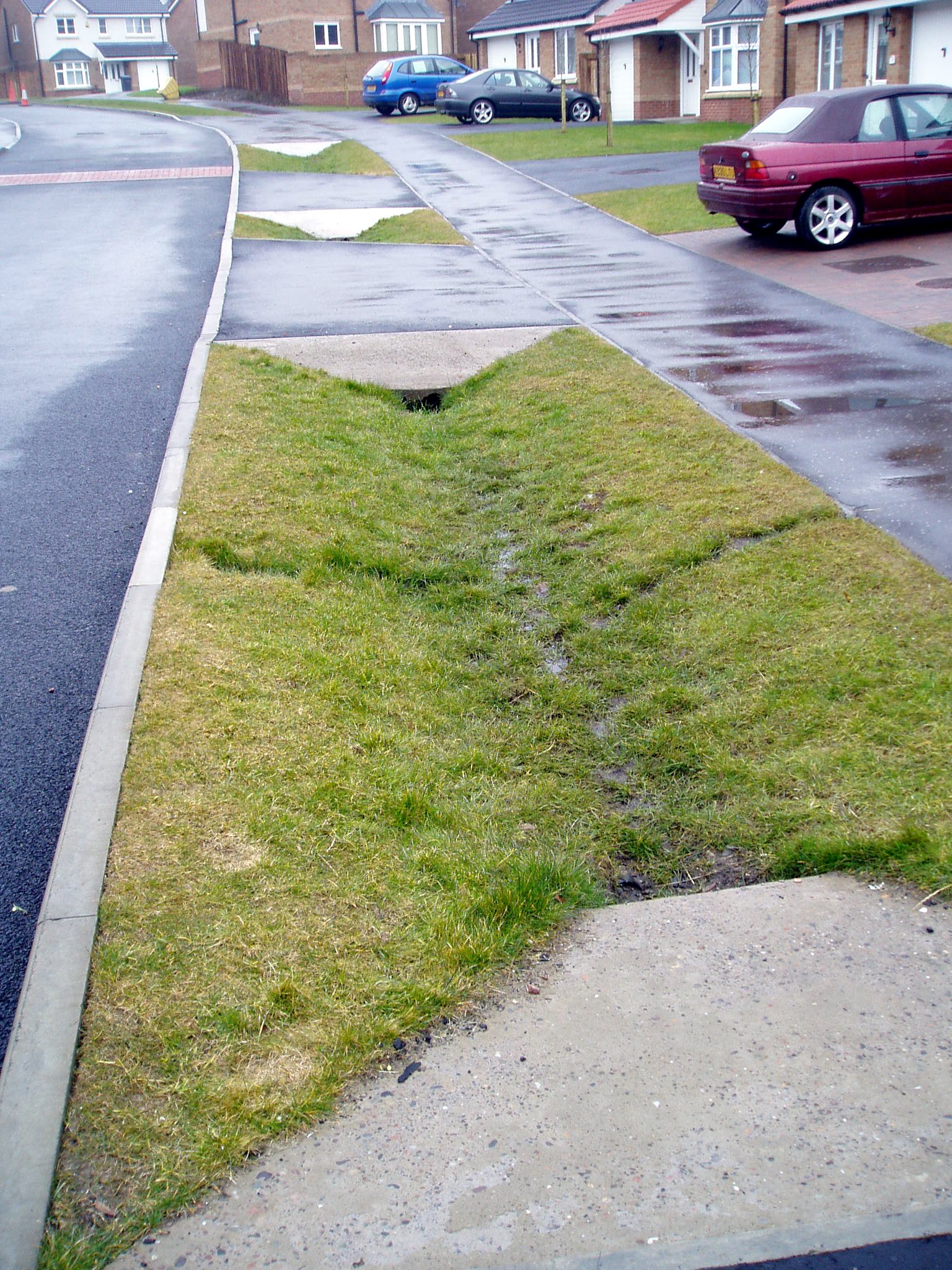- Delivering SuDS
- Using SuDS
- Background
- SuDS principles
- Benefits of SuDS
- Benefits of SuDS
- Why developers should choose SuDS
- Flood risk management
- Water quality management
- Biodiversity & ecology
- Amenity
- Air quality
- Building temperature
- Carbon reduction and sequestration
- Crime
- Economic growth
- Enabling development
- Flexible infrastructure/climate change adaptation
- Education
- Groundwater recharge
- Health and well being
- Pumping wastewater
- Rainwater harvesting
- Recreation
- Tourism
- Traffic calming
- Treating wastewater
- SuDS components
- SuDS components overview
- Source control
- Swales & conveyance channels
- Filtration
- Infiltration
- Retention & detention
- Wetlands
- Inlets, outlets and control structures
- SuDS performance & monitoring
- Delivery
- The costs & benefits of SuDS
- Adoption & maintenance of SuDS
- Legislation & regulation
- Design guidance
- Retrofitting SuDS
- Drainage exceedance
Component: Swales
Description
Swales are shallow, broad and vegetated channels designed to store and/or convey runoff and remove pollutants. They may be used as conveyance structures to pass the runoff to the next stage of the treatment train and can be designed to promote infiltration where soil and groundwater conditions allow.
Check dams and berms also can be installed across the flow path of a swale in order to promote settling and infiltration.
Advantages and disadvantages
|
Advantages |
Disadvantages |
|
|

Where component can be used
Residential: Yes
Commercial/industrial: Yes
High density: Limited (depends on design)
Retrofit: Limited (depends on design)
Contaminated sites: Yes (with liner)
Sites above vulnerable groundwater: Yes (with liner)
Performance
Peak flow reduction: Medium
Volume reduction: Medium
Water quality treatment: Good
Amenity potential: Medium/Good
Ecology potential: Medium
Quantity
Swales are usually designed as conveyance systems, but can also be designed with check dams to increase attenuation and, where applicable, infiltration.
Quality
Swales are effective at removing polluting suspended solids through filtration and sedimentation. The vegetation traps organic and mineral particles that are then incorporated into the soil, while the vegetation takes up any nutrients.
Amenity
Swales are often integrated into the surrounding land use, for example public open space or road verges. Local wild grass and flower species can be introduced for visual interest and to provide a wildlife habitat.
Maintenance
-
Litter/debris removal
-
Grass cutting and removal of cuttings
-
Clearing of inlets, culverts and outlets from debris and sediment
-
Repair of eroded or damaged areas.
Read more on



